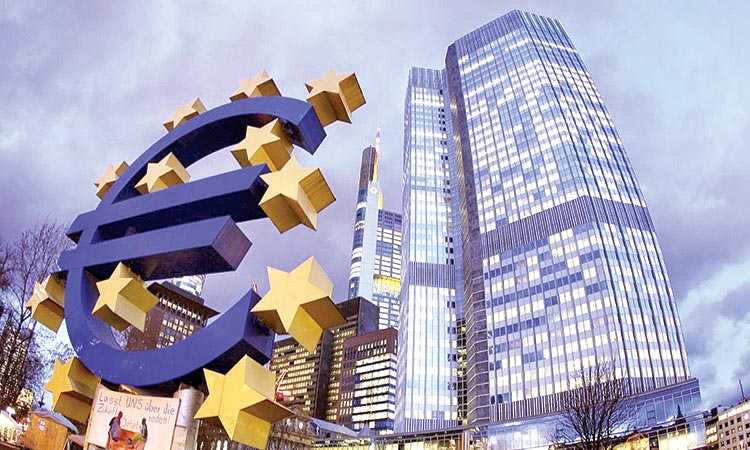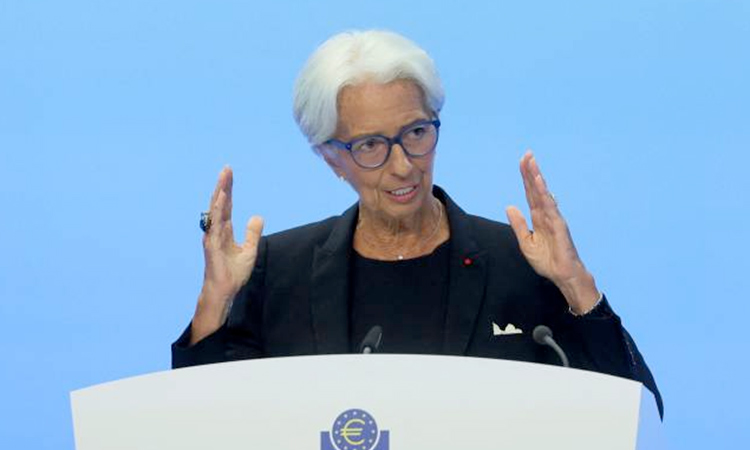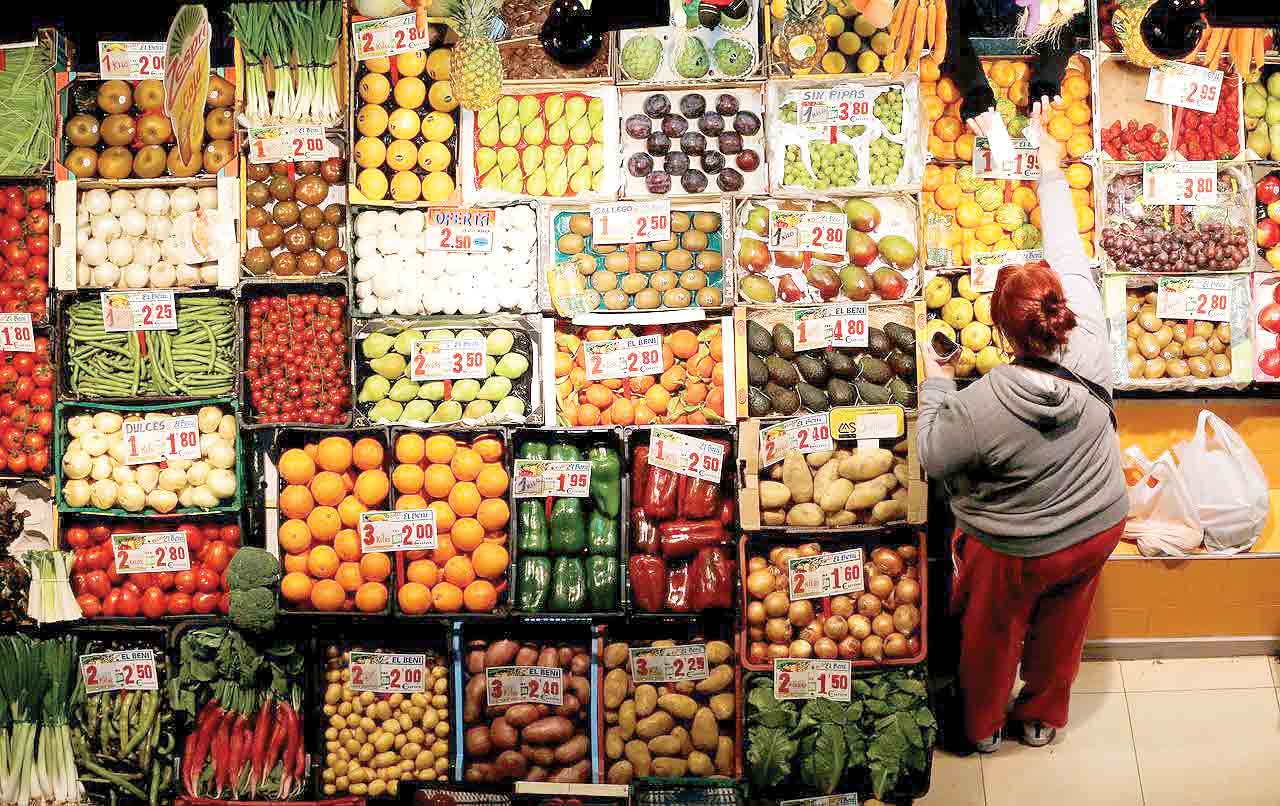ECB puts inflation target in focus, opens door to easing

ECB President Mario Draghi and Vice-President Luis de Guindos leave after the news conference at the ECB headquarters in Frankfurt on Thursday. Reuters
With inflation stuck well below its target, industrial output in Germany in freefall and the US Federal Reserve already in easing mode, it was widely seen as just a matter of time before the ECB opened the door to more stimulus.
The ECB, which kept interest rates unchanged for now, said in its statement it saw rates at present or lower levels through mid-2020, giving up a previous pledge to keep rates unchanged through next June. It also tasked its staff to look at various other easing options including restarting asset purchases.
“This outlook is getting worse and worse,” Draghi told a news conference, adding that a once-hoped-for rebound in the second half of the year was “less likely”.
The ECB statement also omitted its standard reference to an aim of inflation rates “below, but close to, 2%” over the medium term, talking instead of a “commitment to symmetry in the inflation aim”.
“The bottom line... is basically we don›t like what we see on the inflation front and symmetry means there is no 2% cap. Inflation can deviate on both sides,” he said.
The increasingly overt promises of more stimulus are intended to prop up confidence in a eurozone economy struggling with a manufacturing recession that risks unravelling years of stimulus.
While consumer confidence, employment and bank lending remain healthy, a recent string of industrial sentiment indicators paint a dismal picture, raising the risk that weak external demand, partly the result of a global trade war, could soon infect the domestic economy.
The euro eased on the ECB’s decision, trading at around 1.111 against the dollar at 1200 GMT compared with around $1.113 before the bank›s announcement. It later moved higher as Draghi said the risk of an all-out recession was still low.
Expectations of new ECB stimulus have already driven down borrowing costs for eurozone governments, with the yield on Germany›s 10-year bond delving deeper into negative territory at -0.41% on Thursday, close to a record low.
The case for ECB stimulus is supported by weak economic data, particularly in foreign trade and manufacturing, the engine of the eurozone economy›s recent growth run.
Indeed, the German Ifo institute warned earlier on Thursday that recession was spreading across all important sectors of German industry and sentiment was deteriorating quickly.
“There is far and wide nothing to be seen of the second half recovery hoped for in many places,” Commerzbank economist Joerg Kraemer said. “Germany is in a grey area between a marked growth slowdown and a recession.» While some argue there is no urgency for ECB action, Draghi has just three months left of his eight-year tenure, giving him only a handful of opportunities to secure his legacy before he hands over to Christine Lagarde on Oct. 31.
Another problem is that whatever measure the ECB takes over the coming months, they all come with complications and have only limited potency given that the ECB has already exhausted much of its firepower.
Rates are already at record lows and the ECB›s balance sheet is equivalent to 40% of the block’s economic output, suggesting that the limits of its stimulus are near.
Buying more government bonds could also create problems for the bank as it is at or near its self-imposed limits for several of the 19 eurozone countries. While policymakers say they have leeway to adjust their rules, critics of the bank›s asset purchases, who have already launched several legal challenges, are almost certain to take the ECB back to court.
Meanwhile, US Treasury yields rose on Thursday after European Central Bank President Mario Draghi said that the bank sees a low risk of a recession in the eurozone, even as he acknowledged a worsening outlook. Yields initially dropped after the central bank, which kept interest rates unchanged for now, said in its statement it saw rates at present or lower levels through mid-2020, giving up a previous pledge to keep rates unchanged through next June. It also tasked its staff to look at various other easing options including restarting asset purchases. Draghi’s comments regarding a low risk of a recession, however, changed the direction of the market.
“Although he said things such as the outlook is getting worse and worse, they still see the sign of a recession risk as pretty low, so the market is interpreting this as somewhat hawkish,” said Jon Hill, an interest rate strategist at BMO Capital Markets in New York. Benchmark 10-year Treasuries fell 14/32 in price to yield 2.097%, after earlier falling to 2.011%, the lowest since July 8. Weak global growth is leading central banks to ease policy globally, with the Federal Reserve viewed as certain to cut rates when it meets next week. Interest rate futures traders are pricing in a 79 per cent chance of a 25-basis-point cut and 21 per cent likelihood of a deeper 50-basis-point decrease, according to the CME Group’s FedWatch tool.
Agencies






